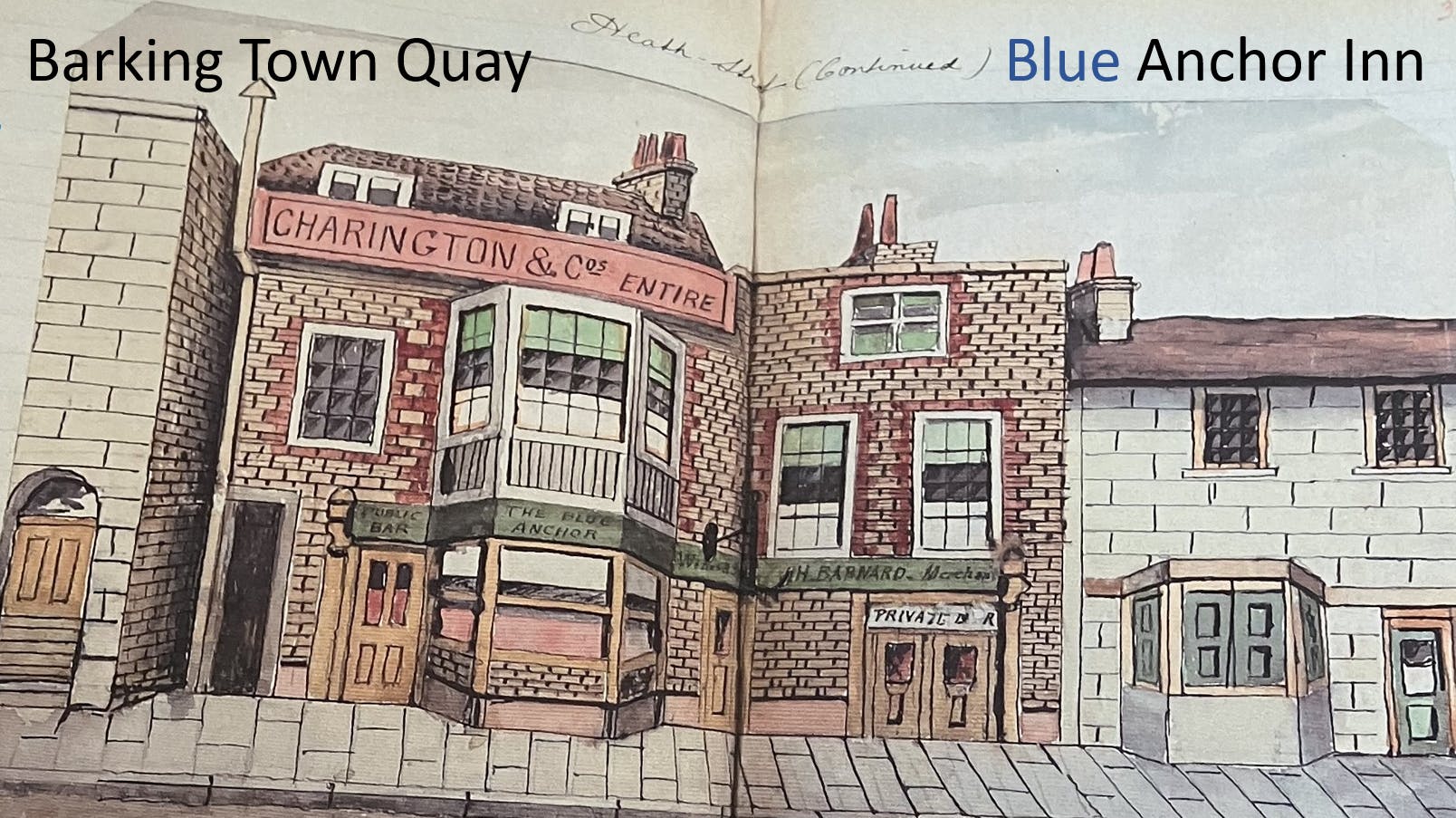Barking Town Quay, Heath Street and the Blue Anchor Inn
Barking Town Quay, Heath Street, and the Blue Anchor Inn
Barking Abbey had a watermill which was recorded as far back as the Domesday Book of 1086 and is depicted on the Manorial Map of 1653 - where the Roding meets Barking Creek at Highbridge Road. The nearby Mill Pool was also known as the Mill Pond and Six Gates. The mill was demolished in 1922 but its Grade II listed, Victorian granary, building remains.
By the nineteenth century the old Mill Pool became the Town Quay. Wharves (for unloading and loading boats and barges) were established in response to the fishing industry and use of the river for supplying raw materials to, and transporting goods from, the nearby factories and industrial mills.
For many centuries Highbridge Road crossed the Roding and curved around the quay into Heath Street. On the corner of the quay and Heath Street stood an Inn for fishermen, first mentioned as the Blew Anker in 1609. The Blue Anchor Hotel moved premises around 1909, when the building was demolished to make way for Abbey Road. The new road crossed the abbey’s ruins and joined London Road to Fisher Street - which was renamed as part of Abbey Road in 1910.
Jacobean Rose & Thistle Mosaic by Tamara Froud
During archaeological excavations of the 1980s a cobbled mosaic, of a rose and a thistle, was uncovered close to here, within the ruins of the old inn, and dated 1614.
The date suggests it was created during the reign of King James I – who united the thrones of England (symbolised by a rose) and Scotland (depicted as a thistle) when he succeeded Queen Elizabeth I. It is possible that the mosaic floor was a belated tribute to King James I. In 1614 he attempted to re-establish a parliament, although this second attempt only lasted two months and became known as the Addled Parliament.
This re-creation of a Rose & Thistle mosaic was funded by The National Lottery Heritage Fund as part of the Barking Heritage Project with additional Abbey Green Funding.
The Blue Anchor, 1898
by WH Frogley whose ancestor,
and fishing smack owner,
Joseph Frogley was landlord in 1814.
Heath Street and Highbridge Road
Heath Street used to head eastwards from the quay and Fisher Street towards Axe Street and Barking Broadway. In the nineteenth century there were many stores on Heath Street, including a watch and clock maker’s, a butcher’s shop, an outfitter’s, several marine stores, a greengrocer’s, a coffee house, and a few inns, of course. Like Fisher Street many of the trades housed here were related to the river and fishing industry.
The shops and homes of Heath Street were removed during the development of Barking town centre in the 1960s. The old road is now represented by a path across Abbey Green, close to this sign.
The town quay has not been a working quay for many years now and Highbridge Road has recently changed its route toward Abbey Road, to make way for quayside residential development. Today the river provides a habitat for wildlife, is used for leisure activities, and provides natural views for the riverside residents.
